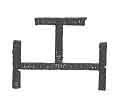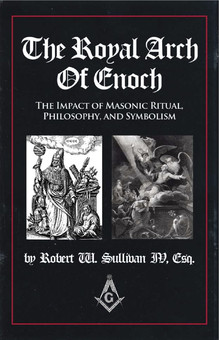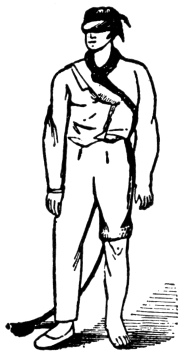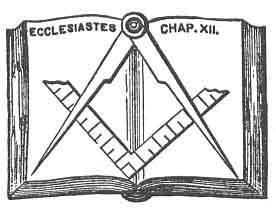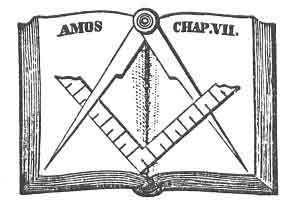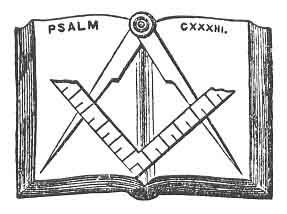“But the Royal Arch Degree is founded on the number three, and therefore each member of the word ought to have been triliteral. Among the Syrians, the Chaldeans, the Phœnicians and others, the ineffable name of the Deity was Bel, Bal, Bul, Baal, or Belin. . . . Again, the Egyptians and Hindoos reverenced On or Om, i.e., Aun, or Aum, as the name of their chief Deity.”
And vide Historical Landmarks, vol. ii. p. 549:
“One says it was Jau, another thinks it was Jaoth, a third, Java; others, Juba, Jao, Jah, Jehovah, and Jove. In a word, the letters of the name are perishable, and the pronunciation of little moment: but the Being himself is ineffable, incomprehensible, and worthy of our utmost veneration. He was called by the Romans Jove, or Jah; by the Chaldeans, the Phœnicians, and the Celtæ, Bel or Bul; and by the Indians, Egyptians, and Greeks, Om or On.”
251:1 The grand hailing sign is made by locking the fingers of both hands together, and carrying them to the top of the head, the palms upward. Then let them drop to the sides.
253:1 At my first exaltation, I was taught to believe it an ancient degree; but I confess, that even at that period I entertained considerable doubts on the point. The Degree is too incongruous to be of any great antiquity. It exhibits too many evidences of modern construction to be received with implicit credence as a ceremony practised by the ancient Dionysiacs, or even the more modern colleges of Freemasons, or confraternities of the Middle Ages. The earliest mention of it in England which I can find, is in the year 1740, just one year after the trifling alteration, sanctioned by the modern Grand Lodge, already mentioned.–Origin of the English Royal Arch, pp. 19, 20.
253:2 The fact is, the grand omnific (all-creating) lost word, it will be seen in the sequel, was eventually found in a vault under the ruins of Solomon’s Temple; and the difficulty was, rationally to account for the manner in which it got there. This, therefore, is the grand object of the Select Master’s Degree; and, at the same time, so to locate the word as symbolically to represent its archetype, the sun lost in the inferior hemisphere. For this purpose a history of the order was manufactured by its founders, of which the following is a sketch:
“The three Grand Masters, at the building of the Temple, entered into a solemn agreement not to confer the Master’s Degree until the Temple should be completed; that all three must be present when it should be conferred, and if either should be taken away by death prior to the finishing of the Temple, the Master’s Degree should be lost.
“After this wise arrangement, lest the knowledge of the arts and sciences, together with the patterns and valuable models which were contained in the Temple, should be lost, they agreed to build a secret vault under ground, leading from Solomon’s most retired apartment, a due west course, and ending under the sanctum sanctorum of the Temple, to be divided into nine separate arches. The ninth arch was to be the place for holding the grand council, and also for a deposit of a true copy of all those things which were contained in the sanctum sanctorum above.
“After the ninth arch was completed, the three Grand Masters deposited therein those things which were important to the craft, such as the Ark of the Covenant, a pot of manna, the rod of Aaron, the book of the law, etc. p. 254.
“Prior to the completion of the Temple, Grand Master Hiram Abiff was assassinated, and by his death the Master’s Word was lost. The two kings were willing to do all in their power to preserve the Sacred Word, and as they could not communicate it to any, by reason of the death of Hiram, they agreed to place it in the secret vault, that if the other treasures were ever brought to light, the Word might be found also.”–Fellows’s Inquiry into the Origin, History, and Purport of Freemasonry, pp. 308, 309.
Next: Extracts from a Dictionary of Masonry

Moe is the founder of GnosticWarrior.com. He is a father, husband, author, martial arts black belt, and an expert in Gnosticism, the occult, and esotericism.

